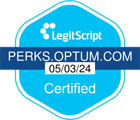Muscle relaxers are medications that prevent and reduce muscle spasms and tightness. Healthcare professionals can prescribe these medications to help treat various conditions, such as scoliosis, multiple sclerosis, and cerebral palsy.
There are two types of muscle relaxers:
- Antispasmodics: These medications specifically treat muscle spasms that can occur due to injuries to muscles, tendons, or ligaments. They work by blocking nerve signals in your brain.
- Antispastics: These medications can help with chronically tight muscles. They work on the spinal cord or muscle cells.
Antispasmodics

Examples of antispasmodics include:
Diazepam
Diazepam (Valium) is a benzodiazepine that is available in several forms, such as an oral tablet, intramuscular (IM) injection, intravenous (IV) injection, and rectal gel.
Intravenous diazepam is faster-acting, with an onset of about 1–3 minutes. Oral tablets start to work within 15–60 minutes. Diazepam’s effects typically last for more than 12 hours.
Doctors may prescribe diazepam to treat muscle spasms and stiffness that can happen with neurological disorders like cerebral palsy and upper motor neuron conditions.
Carisoprodol
Carisoprodol (Soma) is a nonbenzodiazepine available as an oral tablet. It starts to work between 1.5 and 1.7 hours, and its effects can last between 4 and 6 hours.
A doctor may prescribe carisoprodol to help treat painful sprains, strains, and lower back pain. However, research indicates that it may not be the best option for relieving pain.
According to a 2021 review, there’s little evidence that carisoprodol effectively reduces pain intensity. The review also points out that some research suggests it may even increase the risk of acute low back pain.
Cyclobenzaprine
Cyclobenzaprine (Amrix) is a nonbenzodiazepine available in immediate-release and extended-release capsules.
Doctors prescribe cyclobenzaprine to treat muscle spasms that occur with acute muscle conditions. You may get the best results when combining this medication with rest and physical therapy.
If you need help covering the cost of medications, the free Optum Perks Discount Card could help you save up to 80% on prescription drugs. Follow the links on drug names for savings on that medication, or search for a specific drug here.
Antispastics
These medications work on the spinal cord or muscle cells. They can help treat conditions like multiple sclerosis, spinal cord injuries, and cerebral palsy.
Examples of antispastics include:
Baclofen
The Food and Drug Administration (FDA) has approved baclofen (Lioresal) for:
- flexor spasms
- clonus
- spinal cord lesions
- multiple sclerosis (MS)
Baclofen is available as an oral tablet or via an injection into the spinal canal.
According to a 2018 study, when combined with physiotherapy, baclofen spinal injections are more effective than oral medication for people with muscle tightness post-stroke.
A 2023 study suggests that although baclofen may effectively reduce spasticity, the correct dose is essential for minimizing side effects.
A healthcare professional can help determine if baclofen is suitable for you and what dosage can best help minimize your side effects.
Dantrolene
Dantrolene (Dantrium) can help ease side effects from several conditions, such as multiple sclerosis, stroke, and cerebral palsy.
It is available as a capsule and IV injection.
Tizanidine
Tizanidine (Zanaflex) is an antispasmodic and antispastic.
Doctors prescribe it to help manage spasticity from MS or spinal cord injuries. Tizanidine is also effective in managing chronic neck and regional musculoskeletal pain syndromes.
Tizanidine takes between 1 and 2 hours to start working. It is available as an oral tablet and capsule.

Free prescription coupons
Seriously … free. Explore prices that beat the competition 70% of the time.
Get free cardHow to choose the best muscle relaxer for you?
Here are a few questions you may want to ask a healthcare professional when deciding on the best muscle relaxer for you:
- What’s the cause of your pain? Is it due to muscle spasms, stiffness, or both?
- Do you have underlying medical conditions like cerebral palsy or multiple sclerosis (MS)?
- What are the potential side effects of the drug?
- How quickly does the drug work, and how long do the effects last?
- Are there any possible medication interactions?
- How much does a particular medication cost?
- Are generic drug options available?
Alternative treatments
You may want to consider nonprescription therapies for muscle spasms, tightness, and stiffness. The following natural options may help provide relief:
- Chamomile: This plant contains 50 flavonoids with anti-inflammatory properties. You may get relief by massaging chamomile oil into the affected area or drinking chamomile tea to help ease sore muscles.
- Cherry juice: This drink is rich in both potassium and iron and is a strong antioxidant. A 2017 review suggests that tart cherry may help lessen pain, aid in athletic recovery, and decrease inflammation.
- Vitamin D: Chronic muscle pain and muscle spasms may be a sign of a vitamin D deficiency. If you regularly experience muscle pain and spasms, you may find it beneficial to supplement with vitamin D.
- Magnesium: This mineral is responsible for various functions such as glucose control and blood pressure regulation. If you don’t get enough magnesium, you may experience muscle pain and cramping. A 2021 study suggests that magnesium oxide monohydrate (MOMH) supplements may help with cramps and muscle pain. You can also boost your magnesium intake by eating foods like:
- bananas
- almonds
- legumes
- brown rice
Summary
Muscle relaxers can help treat muscle pain, spasms, and stiffness. However, different muscle relaxers may be more effective for different muscle-related conditions, such as scoliosis, multiple sclerosis, and cerebral palsy.
Consider speaking with a doctor to determine whether a muscle relaxer is right for you.
Download the free Optum Perks Discount Card to save up to 80% on some prescription medications.
